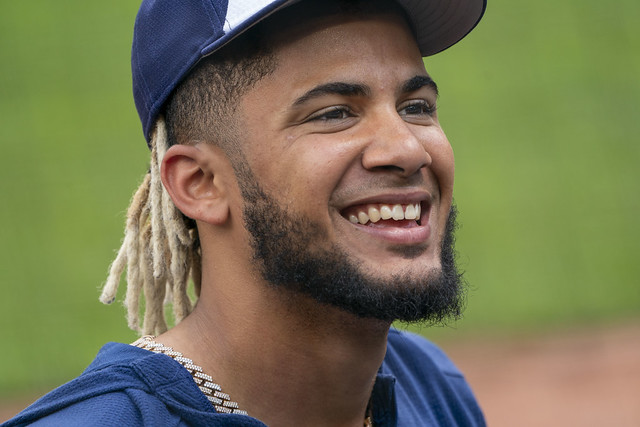2020 Top 100 Prospects
Below is my list of the top 100 prospects in baseball. The scouting summaries were compiled with information provided by available data, industry sources, as well as from my own observations.
Note that prospects are ranked by number but also lie within tiers demarcated by their Future Value grades. The FV grade is more important than the ordinal ranking. For example, the gap between prospect No. 3 on this list, MacKenzie Gore, and prospect No. 33, Jazz Chisholm, is 30 spots, and there’s a substantial difference in talent there. The gap between Evan White (No. 64) and Matthew Liberatore (No. 94), meanwhile, is also 30 numerical places, but the difference in talent is relatively small. You may have noticed that there are more than 100 prospects in the table below, and more than 100 scouting summaries. That’s because we have also included 50 FV prospects who didn’t make the 100; their reports appear below, under the “Other 50 FV Prospects” header. The same comparative principle applies to them.
As a quick explanation, variance means the range of possible outcomes in the big leagues, in terms of peak season. If we feel a prospect could reasonably have a best big league season of anywhere from 1 to 5 WAR, that would be “high” variance, whereas someone like Sean Murphy, whose range is something like 2 to 3 WAR, would be “low” variance. High variance can be read as a good thing, since it allows for lots of ceiling, or a bad thing, since it also allows for a lower floor. Your risk tolerance could lead you to sort by variance within a given FV tier if you feel strongly about it. Here is a primer explaining the connection between FV and WAR. For further explanation of the merits and drawbacks of Future Value, please read this. (If you would like to read a book-length treatment on the subject, you can pre-order my forthcoming book, Future Value, co-written with erstwhile FanGraphs analyst Kiley McDaniel.)
You’ll also notice that there is a FV outcome distribution graph for each prospect on the list. This is our attempt to graphically represent how likely each FV outcome is for each prospect. Using the work of Craig Edwards, I found the base rates for each FV tier of prospect (separately for hitters and pitchers), and the likelihood of each FV of outcome. For example, based on Craig’s research, the average 60 FV hitter on a list becomes a perennial 5+ WAR player over his six controlled years 26% of the time, and has a 27% chance of accumulating, at most, a couple WAR during his six controlled years. I started with these base rates for every player, then manually tweaked them for the first few FV tiers to reflect how I think the player differs from the average player in that FV tier, since a player in rookie ball and a player in Triple-A with the same FV grade obviously don’t have exactly the same odds of success. As such, these graphs are based on empirical findings, but come with the subjectivity of my opinions included to more specifically reflect what I think the odds are of various outcomes.




